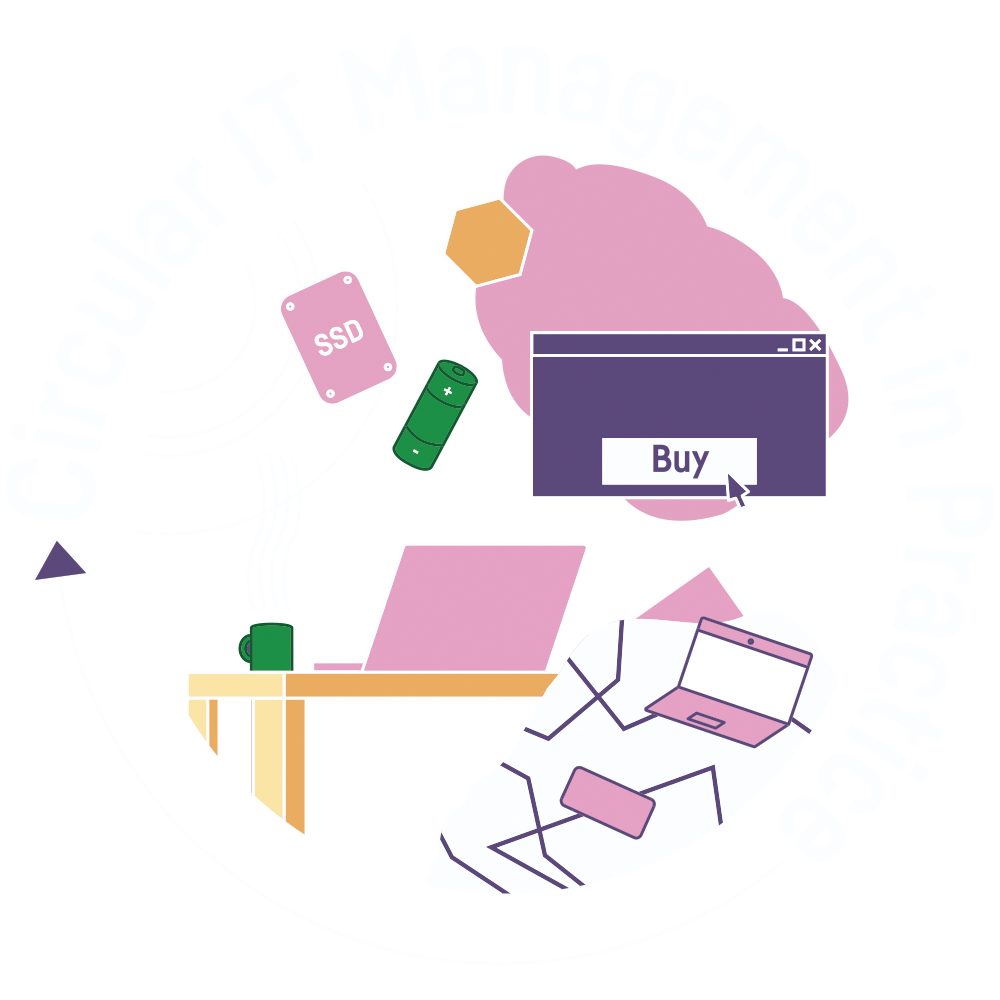We need to integrate the big paradigm shift toward a circular economy not only in our working lives but also in our private ones.
SDGs, GPP, ESG, CSR, etc … there are so many abbreviations to use and remember that we get dizzy. Let’s not forget one thing: Those are exactly the instruments that we need in order to enable our survival on planet Earth in the first place.
But frankly speaking: Don’t we get dizzy looking at our private e-dump at home? We may not even have discovered it yet, because unlike our clothes, which we stow away in vain for years in our wardrobes, all of our not quite as old and still fully functional electronics such as smartphones, tablets, laptops, chargers and so on are placed in different parts of our home because they simply cannot keep up with the glamor and glory of a brand new product that has recently been released on the market. Out of sight, out of mind, and our guilty conscience can also be swept under the rug.
Sustainable? No, absolutely not!
Even though we have continuously been told in school for more than 40 years that we need to take care of the environment, history has often taught us that people only react when the roof is on fire.
Nonetheless, awareness is on the rise, and that is a good thing. However, it is important to integrate this unstoppable and already occurring paradigm shift toward a circular economy, not only in our working lives with the above-mentioned tools, but also in our private ones. We are all sitting in the same boat, no matter if you are a decision-maker or a pastry cook, we all have a responsibility.
It surely isn’t an easy task, but more of a gargantuan effort, because people’s biggest fear is to change their habits. What’s the alternative? Waiting for a comet heading for the world and providing us — if we were to survive the impact — with valuable raw materials and resources so that we can continue to drive our consumer behavior ad absurdum? Right, didn’t think so.
It takes pioneers, those who dare to make an example. In recent times, the question “Mirror, mirror on the wall, who on this globe is the bravest of all?” can be answered with: France. It has taken the lead on electronic waste which is the fastest growing waste stream in the world. With its legally binding reparability index for electronics, it is bravely showing the path to follow toward a circular economy.
With TCO Certified, we are taking it one step further: We help buyers and consumers to strengthen their social and environmental leverage and take a more responsible approach to the electronics they use. To be eligible for TCO Certified, generation 9, the products must meet even more stringent criteria from the latest certification in several different categories. More than 40 new Sustainability Performance Indicators (SPIs) are gathered and verified by independent experts.
Furthermore, we launched the global Circular Electronics Initiative together with other organizations and count currently more than 20 partners. No one can do everything. But everyone can do something.
Here is our check-list to help you contribute to more circular and sustainable management of your IT:
- Re-evaluate. Do you really need to buy and replace your current gadget? If not, make it a challenge to use it an additional year and re-evaluate again next year.
- Extend the life of your products. This is often the most critical thing you can do to reduce the environmental footprint of your use. Upgrade and repair your products so they last longer. Used products are in high demand, so make use of the second-hand market and buy and sell your products there.
- If you need to buy a new product, choose products that carry a sustainability certification that includes robust criteria and requires third-party verification.
- If you can buy a second-hand product, ensure you carry out necessary supplier due diligence to product quality and performance.
- Choose a durable product that can last longer. Avoid buying unrepairable electronics that you may risk having to throw away after a short usage time.
- Compensate part of the footprint of your new product, by making your old product available for reuse or recycling and by purchasing climate offsetting as a service.
- Don’t throw it out! Electronics contain valuable resources that can be reused. If it’s not possible to reuse or sell your old products, take them to an electronics recycler or refurbisher where they will be handled responsibly.
And there is more: Circular economy drives social and environmental sustainability which again creates jobs, smart cities, education, and social intact, healthy and prosperous societies.
The need to go circular has become especially pressing as digitalization continues to grow and with it the consumption of electronic devices. At the same time, the resources on our planet that are needed to produce those are finite, and we need to take responsibility.
Our motto shall be: Allow your IT products to live longer, it will pay off as you will allow you and future generations to live longer.
In the future, we want to be able to look at ourselves in the mirror without feeling shame and put forward a proud and enduring smile that can be passed down through generations.
Let’s smile together — in a sustainable way!

Julita Ratzenberger is our polyglot Global Growth & Communications Manager, the person you should connect with if you are interested in any type of collaboration. Her free time she dedicates to music, writing, and geopolitical talks.





